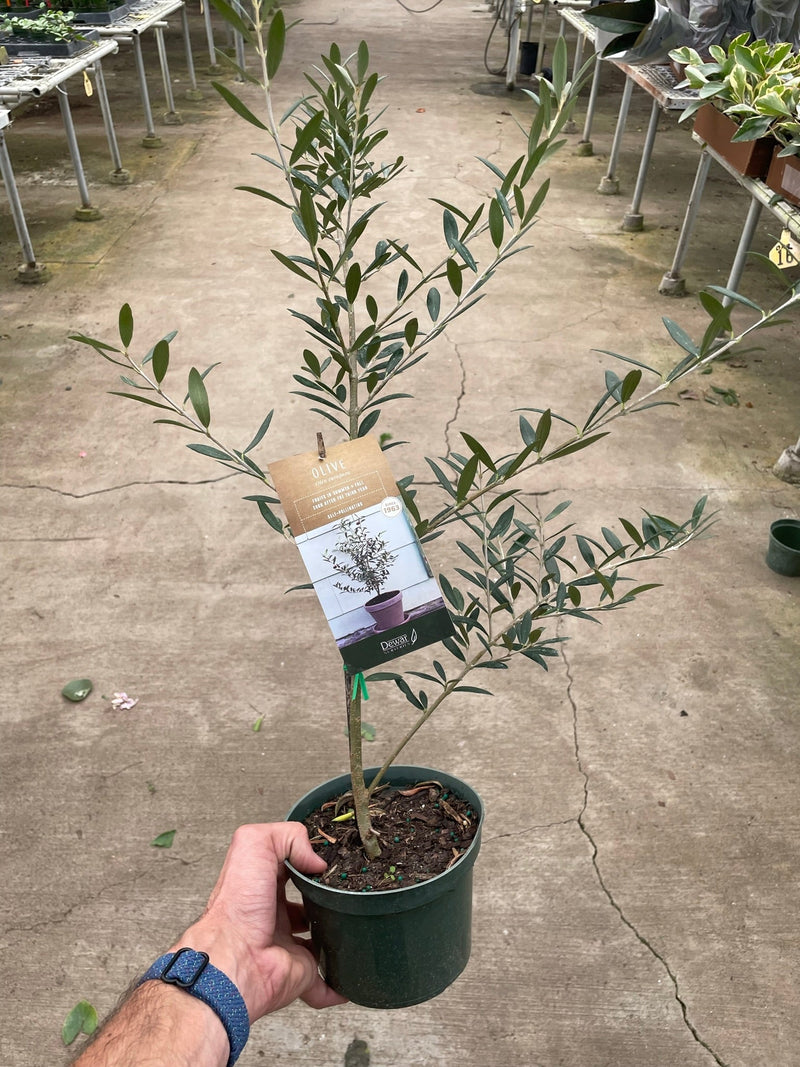Common Olive Tree (Olea europaea)
Couldn't load pickup availability
Description: The Common Olive Tree (Olea europaea) is a classic Mediterranean evergreen tree cherished for its iconic silvery-green foliage, gnarled trunk, and bountiful fruit. Widely cultivated for its culinary and ornamental value, the olive tree symbolizes peace, prosperity, and longevity. Whether grown in landscapes, containers, or bonsai form, the Common Olive Tree adds a touch of elegance and Mediterranean charm to any garden or indoor space.
🌿 Botanical Name: Olea europaea
💧 Care Level: Low to moderate. The Common Olive Tree is relatively drought-tolerant once established but benefits from regular watering during its first few years of growth.
📏 Size: The Common Olive Tree can vary widely in size, ranging from compact shrubs to tall trees depending on the variety and growing conditions. In optimal conditions, it can reach heights of 20 to 30 feet (6 to 9 meters) with a spread of 15 to 25 feet (4.5 to 7.5 meters).
☀️ Light: The Common Olive Tree thrives in full sun, requiring at least 6 to 8 hours of direct sunlight per day for optimal growth and fruit production.
💧 Water: Water young olive trees regularly, keeping the soil consistently moist but not waterlogged. Once established, olive trees are drought-tolerant and require less frequent watering, but they benefit from occasional deep soakings during prolonged dry spells.
🌱 Soil: Plant olive trees in well-draining soil with a pH range of 6.0 to 8.5. Sandy loam or loamy soils are ideal, as they provide good drainage while retaining some moisture.
🌱 Fertilizing: Fertilize olive trees sparingly, using a balanced fertilizer formulated for woody plants. Apply fertilizer in early spring before new growth begins, following the manufacturer's instructions.
🌳 Pruning: Prune olive trees regularly to maintain their shape, promote air circulation, and remove dead or diseased branches. Pruning is typically done in late winter or early spring before the tree enters its active growth phase.
🍃 Pests and Diseases: Common pests of olive trees include olive fruit flies, scale insects, and olive knot disease. Monitor your tree regularly for signs of pest infestation or disease, and take appropriate measures to control them.
🍈 Harvesting: Olives typically ripen in late summer to early winter, depending on the variety and climate. Harvest olives by hand when they reach their desired ripeness for eating or processing into olive oil.
🌳 Winter Care: In colder climates, provide protection for olive trees during winter by covering them with frost cloth or bringing container-grown specimens indoors. Avoid pruning in late fall or winter to prevent frost damage to new growth.
🌱 Propagation: Olive trees can be propagated from seeds, cuttings, or by grafting. Keep in mind that seed-grown olive trees may not produce fruit true to the parent plant and can take several years to mature.


Common Olive Tree (Olea europaea)

